Talking to AI is now as easy as chatting with a friend. ChatGPT’s voice chat feature makes this a reality for everyone, whether you’re a free user or a subscriber. This feature takes AI interaction to the next level, making conversations feel natural and engaging. In this article, we’ll guide you through every step of unlocking this exciting feature, ensuring that you’re not just reading about the future – you’re living it. Hope you like the article and get to understand how you can use ChatGPT’s voice chat feature in your mobiles or on the web.
Table of contents
What is ChatGPT’s Voice Chat Feature?
ChatGPT’s voice chat feature allows you to have a conversation with its most powerful LLM GPT 4o. Using this feature you can talk to ChatGPT like you would talk to your friend and get real-time answers for all their queries. The Voice chat feature isn’t a new feature under ChatGPT’s umbrella but the way it works now is a significant improvement over its previous version, making it special and more useful. Previously the “standard” voice chat feature in ChatGPT involved a:
- Speech-to-text tool: to convert the voice command into text.
- Large language model: to process the text and generate a suitable reply.
- Test-to-speech tool: to convert the generated text into audio output.
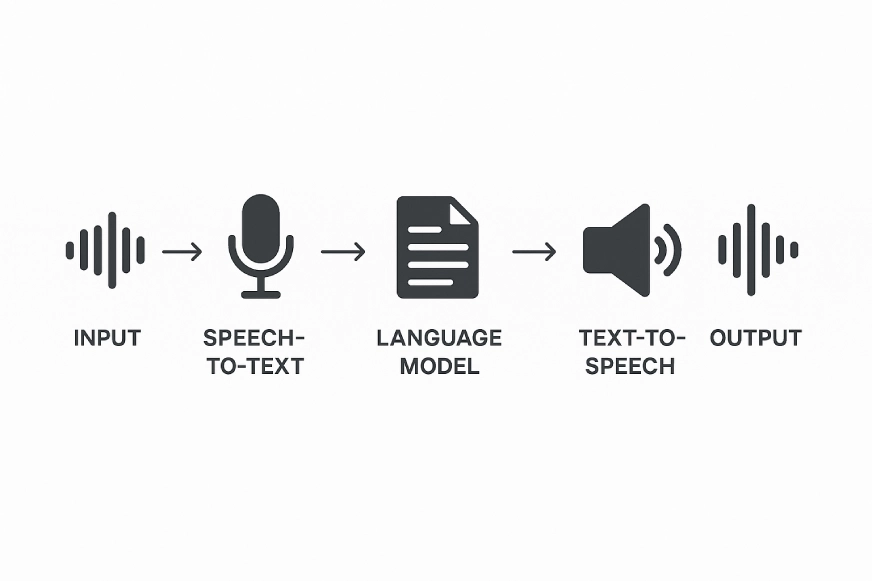
However, the current version of voice chat is more streamlined. It is the “advanced voice mode”, that directly “hears” the audio, and catches the “nonverbal” cues to generate more natural responses. ChatGPT’s voice mode uses GPT 4o or GPT 4o-mini multimodal LLMs that directly take in the voice input, process it, and generate a suitable output.
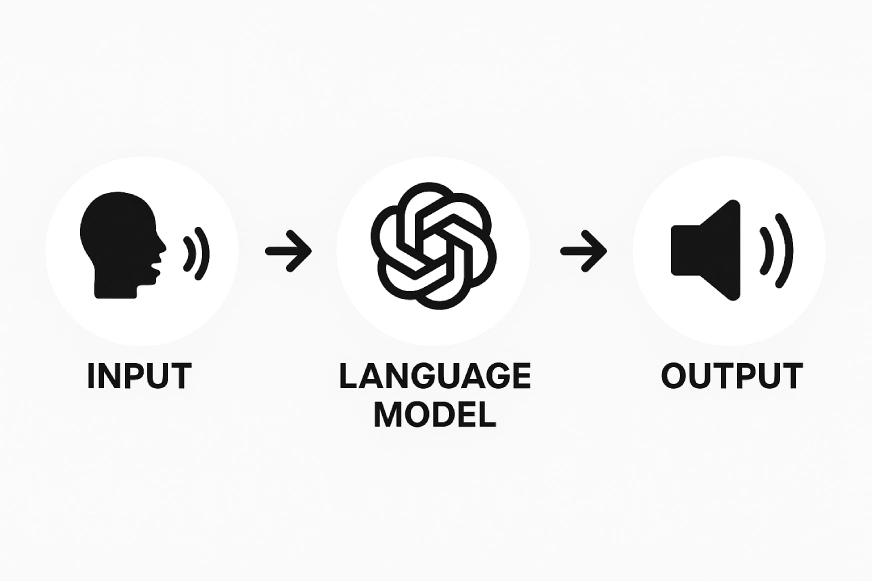
Users can share their video, screen, and images during a voice chat with ChatGPT.
Steps to Use ChatGPT’s Voice Feature
This voice chat feature is available on ChatGPT’s mobile app, desktop app as well as webpage interface. Let’s now understand how we can use the voice feature on the webpage and the mobile app.
On the Webpage interface
On the webpage interface, using ChatGPT’s voice mode is a simple process. Follow the steps given below to get started.
Installation and Setup
- Head to ChatGPT’s web page and login to your account.
- Click on the “voice waveform” icon at the right-most corner of the chatbox.
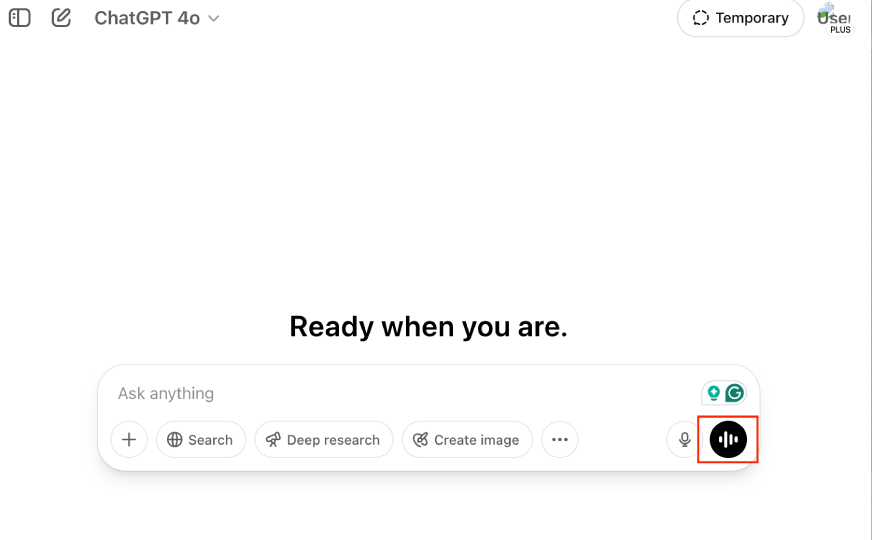
- If its your first time using ChatGPT’s voice mode, then you will have to grant ChatGPT access to your desktop’s microphone.

- During a voice conversation, make sure to unmute your microphone.
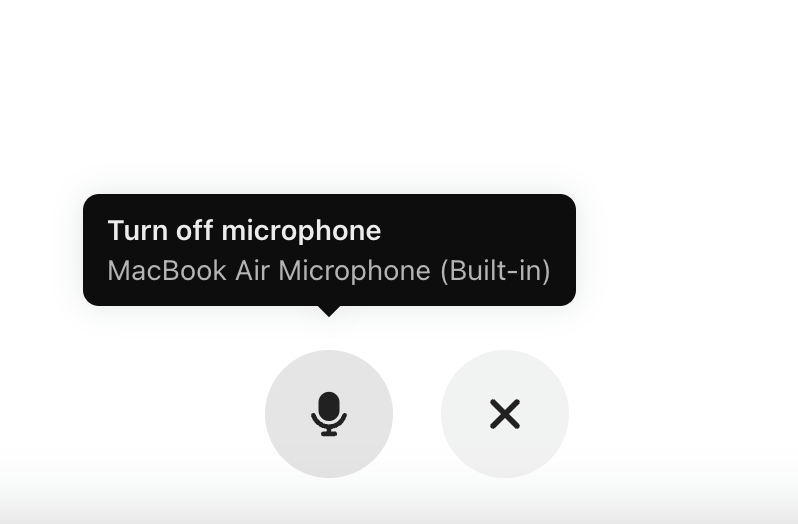
- Lastly, you can click on the “filter icon” present at the top left corner of the screen to select the voice that you want to interact with from the different voice options.
Once done, you can start talking to ChatGPT and hear it as it responds to your queries while you work on other things.
On the Mobile App
Using ChatGPT’s voice mode on mobile allows you to interact with the AI chatbot as you go about your day-to-day activities. Follow the steps given below to have a quick chat with ChatGPT on the phone:
Installation and Setup
- Install the ChatGPT app on your Android or iOS device.
- Open the app and log in to your OpenAI account.

- Launch the ChatGPT app and find the “voice waveform” icon in the chat box’s right-side corner.
- Click on the icon and follow the instructions on the screen to finalize setting up the voice chat.
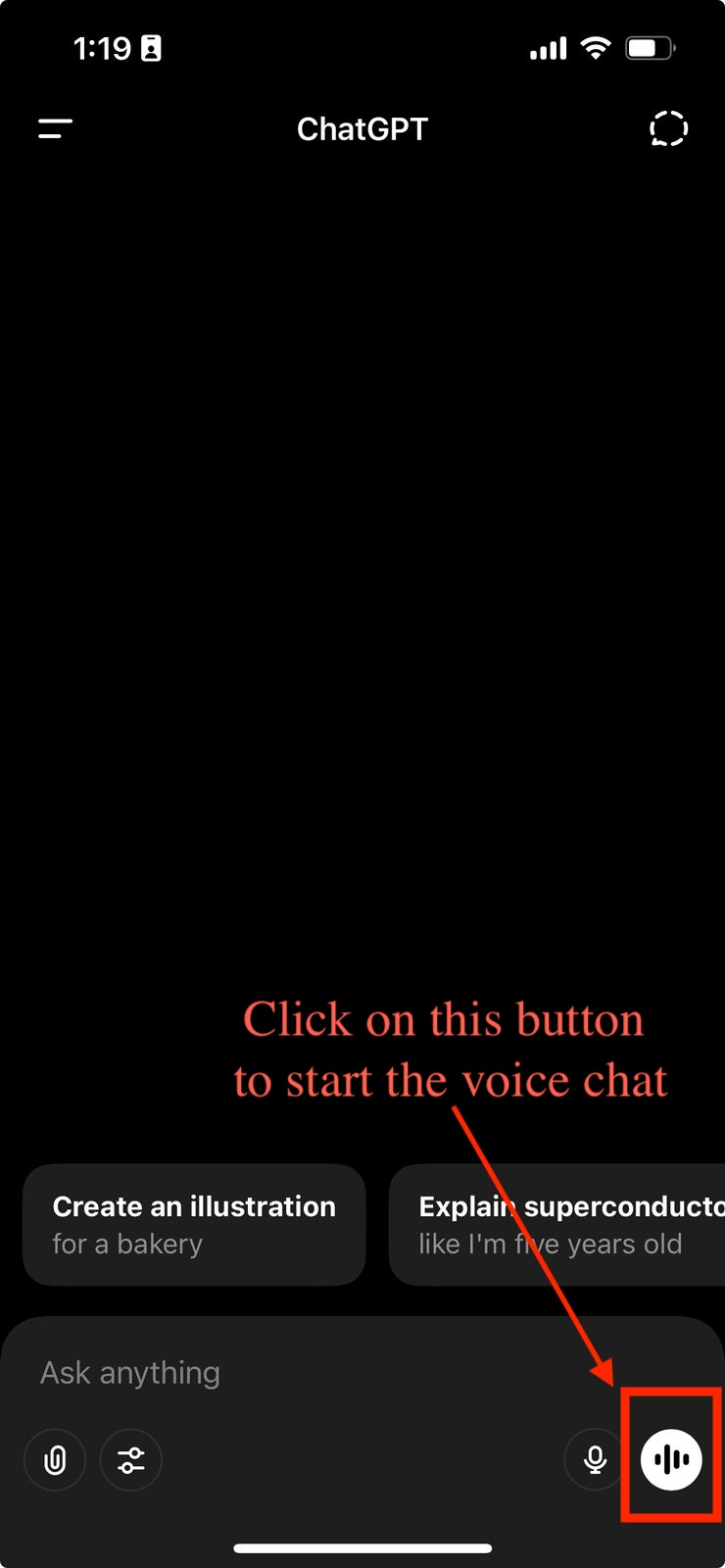
- After completing the setup, press the waveform icon once more to initiate a voice conversation with ChatGPT voice. Speak to the AI, and it will respond to your vocal queries.
- To modify the voice, click on the “filter icon” Here you can scroll through multiple voice options and find the one that you wish to interact with.
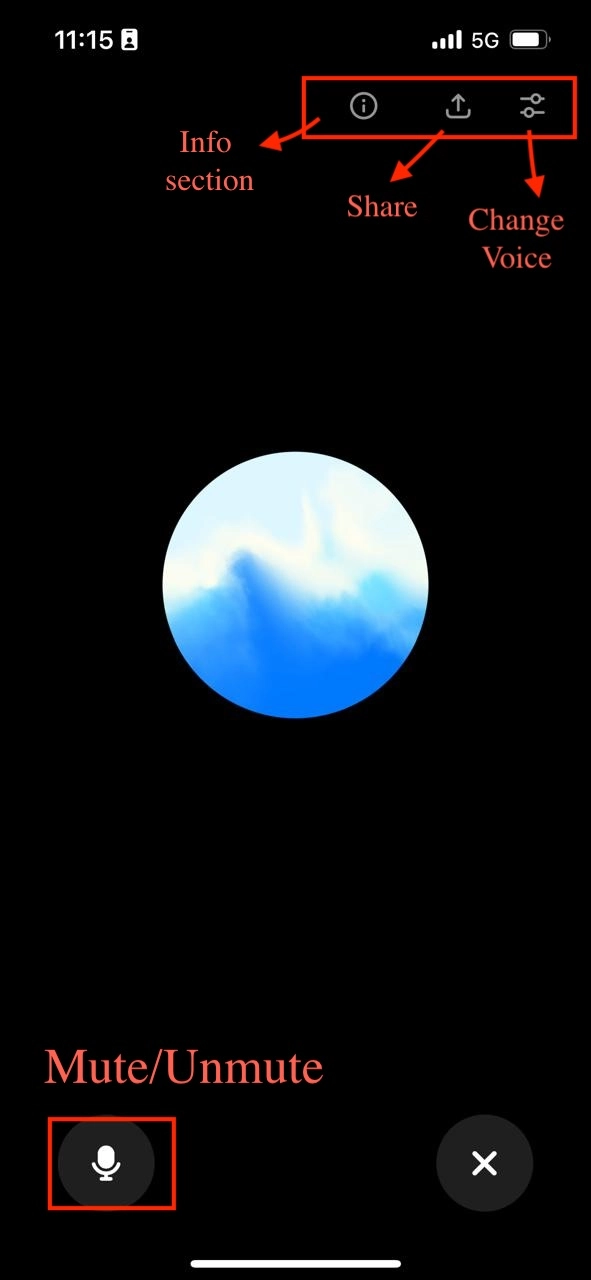
- You can also share your voice clip across different platforms by clicking on the “share icon” at the top right side of the screen
- Finally, by clicking on the “information icon” at the top right corner of the screen, you can interact with ChatGPT on a daily basis with increased limits using the faster, smarter model GPT 4o-mini for free.
You can also keep the voice conversation going in the background while you work on other apps or have your phone screen locked by toggling the “Background Conversations” on in the settings.
Is ChatGPT’s Voice Chat Feature Free?
Yes, ChatGPT’s Voice Chat Feature is available for free in its free plan but it comes with limited use and is powered by GPT-4o mini. In the paid plans like Plus, Pro, Team, Enterprise, and Edu users get to interact with the GPT-4o model for a limited number of times on a daily basis.
These limits may be subject to change for both the free and paid plans. Although the paid plan does come with higher limits compared to the free plan.
Also Read: 6 Easy Ways to Access ChatGPT-4 for Free
Why Use ChatGPT’s Voice Feature?
ChatGPT’s voice feature offers several advantages over traditional text-based interactions:
- Enhanced Naturalness: It provides a more natural and intuitive way to communicate, akin to how people interact with each other in real life. This can be particularly beneficial for users who are not comfortable typing or prefer spoken interactions.
- Improved Accessibility: The voice conversation feature enhances the accessibility of ChatGPT, making it more accessible to users with visual impairments or other physical limitations that hinder typing. By using their voice, these individuals can fully engage with ChatGPT and access its capabilities without any barriers.
- Better Communication: The voice feature adds a new dimension to ChatGPT’s conversational abilities. By incorporating voice intonation, pauses, and emphasis, ChatGPT voice can convey emotions and nuances that are difficult to capture in text alone. This can lead to more engaging and meaningful conversations between users and the AI.
Conclusion
Overall, ChatGPT’s voice feature represents a significant leap forward in human-AI interaction. As AI continues to evolve, the ability to interact with machines using voice will undoubtedly become even more commonplace, and voice feature is paving the way for this future.
Hope you like the article and get understanding about the chatgpt voice chat, and how to do voice chat with the help of ChatGPT.
Key Takeaways:
- ChatGPT’s voice chat feature brings natural and intuitive AI interaction to everyday life
- Setting up voice chat involves installing the app, signing in, and following on-screen instructions
- Voice interaction with ChatGPT offers enhanced naturalness, improved accessibility, and better communication
Kindly share your thoughts on using ChatGPT’s voice feature in the comment section below!
Frequently Asked Questions
A. Yes, you can voice chat with ChatGPT. Some platforms and apps offer voice chat features with ChatGPT, allowing you to speak to it and hear its responses.
A. To get ChatGPT to talk, you need to use a platform or application that supports voice interaction. For example, some apps integrate ChatGPT with voice assistants or text-to-speech technology, enabling it to talk.
A. To talk by voice with ChatGPT, use a compatible app or service that includes a microphone input and text-to-speech output. You speak into the microphone, and the app processes your speech, sending it to ChatGPT and then reading out the response.
A. Yes, ChatGPT can use text-to-speech technology. When integrated with TTS systems, ChatGPT voice can convert its text responses into spoken words, allowing you to hear its replies.





